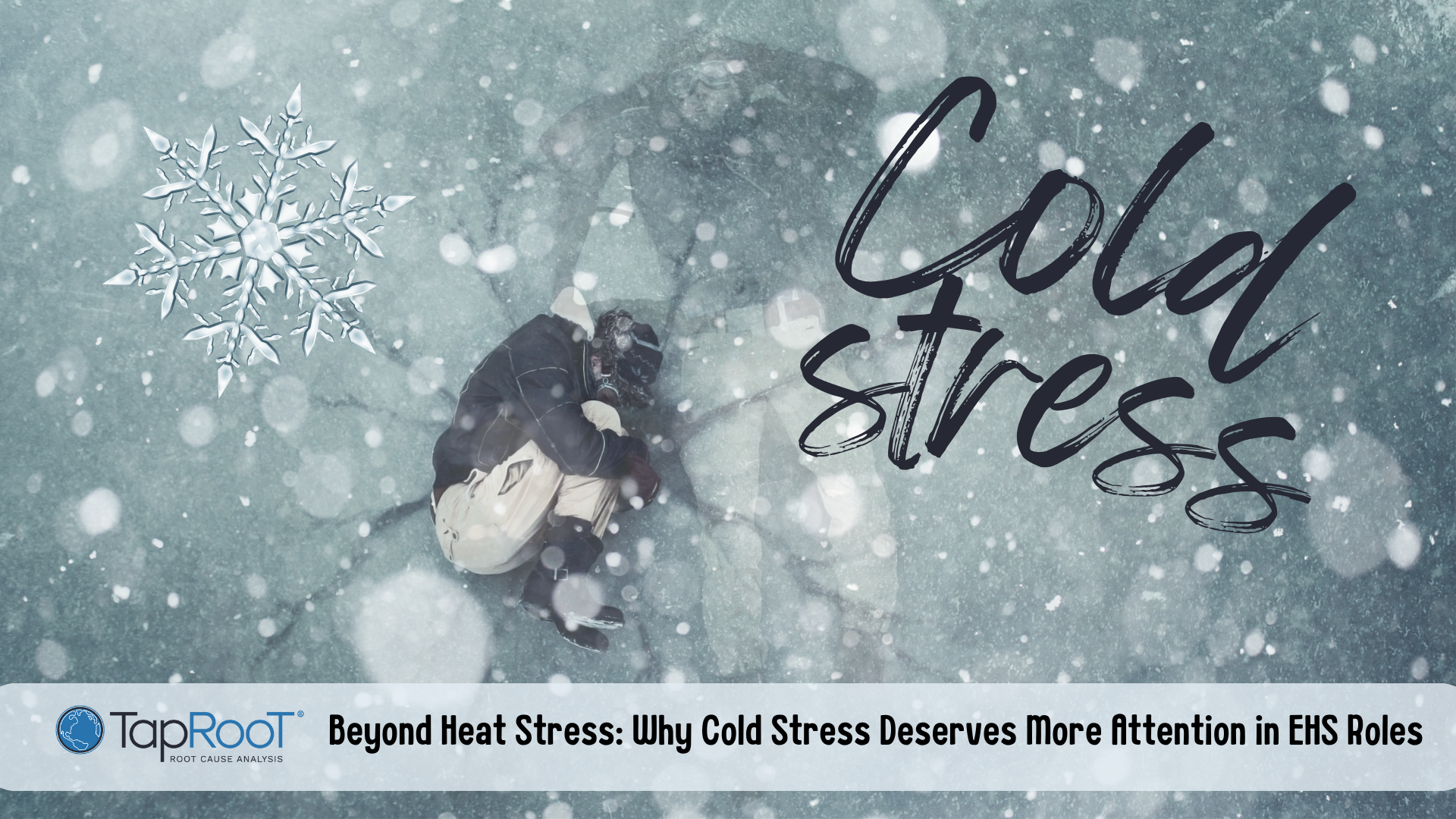Beyond Heat Stress: Why Cold Stress Deserves More Attention in EHS Roles

December 21 marks the first official day of the winter season. In Environmental, Health, and Safety (EHS) roles, heat stress often takes center stage during warmer months, with extensive safety programs in place to protect workers from the dangers of overheating, dehydration, and heat-related illnesses. However, while heat stress is rightly prioritized, an often-overlooked danger is the potential for cold stress, which can also seriously affect worker health and safety. As safety professionals, we must broaden our focus to include cold stress awareness and mitigation as part of our comprehensive safety strategies.
Understanding Cold Stress
This condition occurs when the body loses heat more quickly than it can produce it, leading to a dangerous drop in core body temperature. It can occur in various environments, not just during frigid winters. Wind, wet conditions, and cold water exposure can accelerate heat loss, and even mild temperatures can lead to cold stress if proper precautions aren’t taken.
There are several stages of cold stress, from mild discomfort to severe medical conditions:
- Hypothermia: When the body temperature falls below 95°F (35°C), resulting in symptoms such as shivering, confusion, and drowsiness. Severe hypothermia can lead to unconsciousness or death.
- Frostbite: When body tissue freezes, leading to damage in extremities such as fingers, toes, ears, and the nose. If left untreated, frostbite can result in permanent tissue loss or gangrene.
- Chilblains and Trench Foot: Prolonged exposure to cold, damp conditions can lead to painful skin conditions, including swelling, red or purple skin, and in severe cases, ulceration or infection.
If safety protocols aren’t in place, these conditions can result in lost productivity, increased absenteeism, and even legal liabilities.
The Impact on Workers
Construction, agriculture, and manufacturing workers are often exposed to cold weather, but the risk isn’t limited to these fields. Emergency responders, outdoor maintenance crews, and transportation workers are also at risk when working in low temperatures or wet conditions.
It’s important to remember that the effects of cold stress are not just limited to the individuals who experience it. It can also lead to:
- Reduced performance and concentration: Workers may struggle to perform tasks efficiently when they are distracted by the discomfort or physical symptoms of cold stress.
- Increased risk of accidents: Cold stress impairs coordination, leading to a higher likelihood of slips, falls, and equipment mishandling.
- Long-term health consequences: Chronic exposure to cold can result in long-term health issues such as joint and muscle stiffness, increased risk of cardiovascular problems, and reduced immunity.
Why It Is Often Overlooked
Despite the clear dangers, many EHS professionals focus more on heat stress. There are several reasons for this:
- Seasonal focus: Heat-related illnesses are often seen as more urgent during the hot summer months, making cold stress seem less relevant.
- Invisibility: Cold stress may not be as immediately noticeable as heat stress. While overheating causes visible sweating, fatigue, and redness, the symptoms of cold stress may not be as obvious until it’s too late.
- Lack of awareness: Cold stress awareness may not be as ingrained in EHS protocols, so cold stress prevention measures are often overlooked.
How EHS Professionals Can Address Cold Stress
1. Education and Awareness: Just as workers are educated about the risks of heat stress, similar training should be provided to raise awareness of cold stress. Workers should be taught the symptoms of cold-related illnesses, how to monitor themselves and their coworkers, and what actions to take when they begin to experience signs of cold stress.
2. Appropriate Clothing: Ensure workers have appropriate cold-weather gear, including insulated layers, waterproof clothing, and protective gloves, hats, and boots. Layering is key to trapping heat, while waterproof materials help prevent heat loss from moisture.
3. Work/Rest Cycles: Implement regular breaks in warm shelters to allow workers to regain body heat. This is especially important during high-intensity activities or when workers are exposed to high winds or wet conditions.
4. Hydration: While cold temperatures may reduce the sensation of thirst, maintaining hydration is still crucial. Dehydration in cold environments can increase the risk of hypothermia, as the body struggles to regulate temperature.
5. Monitoring and Early Intervention: Encourage supervisors to regularly check on workers during long shifts or extreme cold conditions. Early recognition of symptoms like shivering, confusion, and numbness can prevent more serious injuries.
6. Emergency Preparedness: Develop clear emergency response procedures during a cold stress-related incident. Ensure there are trained personnel on-site who are familiar with treating hypothermia, frostbite, and other cold-related conditions.
Conclusion
To learn more about how to incorporate cold stress prevention into your EHS programs, consider attending the upcoming Global TapRooT® Summit, where experts will share valuable insights into improving safety culture and expanding your knowledge on a variety of safety and human performance topics.
By raising awareness, providing proper equipment, and implementing thoughtful safety protocols, we can help mitigate risks, ensuring that workers stay safe and healthy year-round. So, remember: Stay warm, stay safe, and bundle up with the right precautions!



